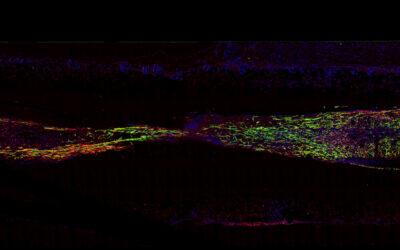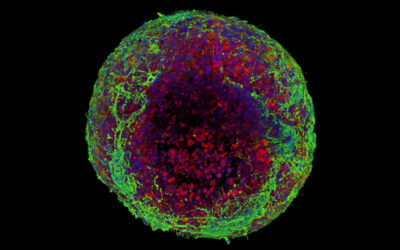Our bodies are a complex tapestry of cells, woven into tissues and organs, like bones, muscle, and skin. All these cells begin as blank slates called stem cells, which are directed to become all the unique cell types in the body by a myriad of genetic and environmental cues.
To harness the biomedical potential of stem cells, researchers have long sought ways to untangle these factors and find a recipe to efficiently grow any desired cell type. Now, expertise from textile research is helping create a new platform to achieve this goal.
Jinlian Hu, now a researcher in the Department of Biomedical Engineering at City University of Hong Kong, began her academic career in a field seemingly unrelated to biomedicine. “I’m actually a textile engineer by education,” she explained.
Throughout her long career though, Hu has pursued a curiosity and interest in interdisciplinary projects. After being introduced to and successfully studying a material called shape-memory polymers, this path eventually led to stem cell research.
Polymer threads for textiles and medicine
Originally, Hu’s interest in polymers lay in smart textiles. Polymers are versatile materials made from long chains of repeating molecules, and Hu studied how they change shape in response to external stimuli, like temperature, for the development of clothing that reacts to the wearer’s environment.
Her success with these projects led to her biomedicine and another fascinating polymer called polyvinylidene fluoride, which belongs to a unique class of materials known as piezoelectrics. These materials can generate and transmit electrical currents when they are mechanically deformed, for example being stretched, pulled, or pressed down upon.
Their peizoelectric nature coupled with the fact that these polymers are soft, organic materials that mesh well with living tissue, makes them excellent candidates for medical applications like powering implanted devices, such as pacemakers.
When it comes to growing stem cells, these polymers are being studied for their ability to supercharge stem cell growth.
Charging stem cell growth
While the mechanism is not entirely understood, researchers know that providing an electrical stimulus to stem cells improves growth and the cells’ ability to differentiate into a specific cell type. This is not overly surprising given that cells like neurons, muscles, and others, use electrical charges to send and receive information. Piezoelectric polymers have been explored as a scaffold for growing new cells because they provide a charged and bio-friendly environment for living cells.
Hu and her colleagues set out to investigate ways to increase the piezoelectric properties of polyvinylidene fluoride nanofibers and use them as a scaffold for growing bone marrow-derived mesenchymal stem cells, a particular type of stem cell that produces bone. In a paper published in Advanced Functional Materials Hu’s team described two factors that improved stem cell growth.
First, to increase the piezoelectric properties of the nanofibers, the orientation of the molecules in the polymer must be shifted from what is called the alpha phase to the beta phase. To achieve this, Hu used a process called annealing, which simply involves heating up the material and then allowing it to cool. Annealing the nanofibers increased the overall amount of beta phase-oriented molecules in them.
Next, the team looked at how the fibers the cells would grow on could be arranged in a random fashion or an orderly aligned way. According to Hu, previous data showed that aligning the fibers produced a larger electrical output than a random arrangement of fibres. Therefore, they grew stem cells on annealed fibers in random or aligned configurations, as well as on random or aligned configurations of fibers that were not annealed.
A shocking result
As was expected, annealing improved both growth on the ordered and random fibers when compared to non-annealed random and ordered trials. But in a surprise result, the cells grown on randomly arranged fibers grew better than on the aligned fibers.
“When I first heard this from my students, I thought it was very strange and very interesting,” Hu said.
The team investigated this phenomenon further and now believe that the random structure provided more surface area and texture for the cells to adhere to which increased the amount of open ion channels. These channels line the surface of a cell and allow important ions such as calcium to enter.
The experiments showed the promise of this method for growing stem cells and importantly, that this requires no external power. The piezoelectric charge generated by the cells growing on the fibers is enough to boost stem cell growth.
The next steps for Hu and her team are to look at other stem cell types and growth conditions and see if the random arrangement continues to improve growth. They will also look at optimizing this protocol for the specific application of regrowing bone cells.
Importantly, though, this work also provides valuable insight into the factors that guide stem cells on their journey from blank slate to fully formed specialist. Gaining a better understanding of what drives stem cells to grow and differentiate is useful data for improving biomedical techniques and perhaps understanding diseases affecting these cells.
Reference: Hanbai Wu, et al. Stem Cell Self-Triggered Regulation and Differentiation on Polyvinylidene Fluoride Electrospun Nanofibers, Advanced Functional Materials (2023) DOI: 10.1002/adfm.202309270

















